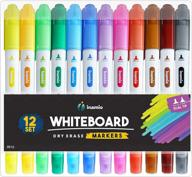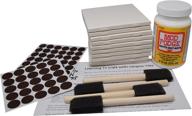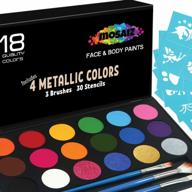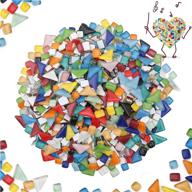The Intricate Art of Mosaic Making
Mosaics are a unique art form that involves creating images or patterns by arranging small pieces of colorful materials like glass, stone, or ceramic. This ancient technique dates back over 4,000 years to ancient Mesopotamia and has been used to decorate countless historic buildings, monuments, and sacred spaces over the centuries.
An Astounding Fact About Mosaic Pieces
When we think of mosaics, we often imagine the countless tiny tiles meticulously placed to form an intricate design. But what's truly astounding is the sheer number of individual mosaic pieces that can make up a large or complex work of art.
| Mosaic | Number of Individual Pieces |
|---|---|
| The ancient mosaic floor in the Roman Villa del Casale | Over 40 million |
| The mosaic artwork in the Mosque of Uqba, Tunisia | Over 16 million |
As these examples illustrate, a single mosaic can be composed of millions of tiny slices of material. The amount of time, planning, precision, and effort required to install so many individual pieces is simply remarkable.
The Intricacy of Mosaic Designs
In addition to the sheer number of pieces, the complexity and intricacy of mosaic designs is also astounding. From photorealistic portraits to abstract patterns and scenes from nature, mosaics can depict any subject with astounding depth, dimension, color, and fine detail.
- Geometric mosaics use simple shapes like circles, triangles, and squares arranged in repeated patterns to form complex designs. The symmetry and precision require careful planning.
- Pictorial mosaics can mimic paintings, using an enormous range of colored tiles to create subtle shades and textures.
- Some mosaics contain gradients, conveying a sense of light and shadow through careful placement of gradually lighter and darker tiles.
Talented mosaic artists can achieve practically any imaginative effect using various sizes, shapes, materials, and colors of tesserae tiles.
Similar products
Installing Millions of Pieces
Perhaps even more impressive than the mosaic design itself is the installation process. Unlike a painting that is created on a single canvas, mosaics are assembled piece-by-piece directly on the surface they will adorn.
Installing millions of tiny hand-cut slices into a flawless cohesive image is a painstaking endeavor requiring monastic levels of patience and pinpoint precision. The sheer scale of some mosaics means artisans must carefully map out the design in sections, working meticulously across the surface to bring the pieces together into a unified whole.
The next time you see a mosaic, take a moment to appreciate not just its beauty, but the remarkable human dedication and skill required to assemble so many unique fragments into a singular breathtaking work of art.
The Historic Art of Mosaic Making
Mosaics are decorative art forms made by assembling small colored pieces of glass, stone, or other materials to create an image or pattern. This ancient technique dates back over 4,000 years and continues to be practiced today.
Top products in 🔲 Mosaic Making
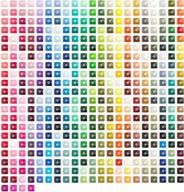

20 Review

Origins of Mosaic Art
The earliest known mosaics were created by ancient Mesopotamians during the 3rd millennium BCE using terra cotta cones pushed into a plaster flooring to form patterns. Mosaic art emerged as a popular decorative technique in ancient Greece and Rome where floors were adorned with complex scenes and geometric designs.
- Greek mosaics used pebbles to create simple patterns and motifs.
- Roman mosaics evolved into elaborate flooring featuring vivid scenes from mythology, nature, and daily life using tiny tesserae tiles.
Mosaics eventually spread through the Byzantine Empire and into the Middle Ages as a way to decorate religious structures with images and symbols of Christian faith.
Evolution of Mosaic Materials and Use
Over the centuries, mosaic artwork has evolved across various cultures in terms of both materials and applications.
| Time Period | Materials | Uses |
|---|---|---|
| Ancient Greek & Roman | Stone, terracotta, glass | Flooring, ceilings, swimming pools |
| Early Christian Era | Glass, gold | Church apses, ceilings, walls |
| Islamic Mosaics | Ceramic tiles | Architectural decoration |
| Modern Era | Ceramic, glass, natural stone | Public art, architecture, crafts |
Contemporary Mosaic Art
Today, mosaic art is still practiced around the world both for ornamental purposes and as a contemporary artistic medium. Modern mosaics can be found adorning architecture, public spaces, private homes, and galleries. Artists explore innovative new materials like rubber, buttons, plastic, and found objects in their mosaic designs.
The mosaic tradition spans millennia, cultures, and continents. From ancient masterpieces to modern abstract designs, mosaic art remains a creative, colorful, and enduring decorative technique.
Essential Supplies for Mosaic Making
One of the appeals of mosaic art is that it requires only a few basic supplies to get started. Here are some of the essential materials and tools needed for any mosaic project:
Another interesting products
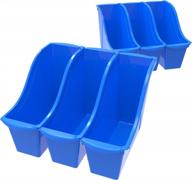

35 Review

Tesserae
Tesserae are the small pieces used to create a mosaic design. There are many options when it comes to tesserae materials:
- Glass - transparent or opaque in endless color options
- Ceramic or porcelain - glazed or unglazed tiles
- Stone - natural or tumbled marble, granite, quartzite
- Mirror - add shimmer and reflections
The size of the tesserae determines the overall look and feel of the mosaic. Small, uniformly sized tiles allow for fine details and texture. Larger, uneven pieces create more abstract effects. A combination of sizes and materials adds interest.
Adhesives
Adhesive is needed to securely bond the tesserae to the base surface. Options include:
| Type | Properties |
|---|---|
| Thinset mortar | Cement-based, best for heavy duty indoor and outdoor applications |
| Mastic | Acrylic or solvent-based, good for vertical surfaces |
| Epoxy | Two-part resin great for glass mosaics |
Tools
Specialized tools make cutting, placing, and grouting tesserae easier:
- Nippers - clippers for breaking up tiles
- Grinder - for smoothing sharp edges
- Trowel - for spreading adhesive evenly
- Spacers - create consistent grout lines
- Grout float - presses grout into gaps
Basic household items like a ruler, pencil, painter's tape, sponge, and buckets are also handy for planning designs, masking edges, cleaning up, and mixing mortar.
Other Helpful Supplies
Some additional supplies that come in handy include:
- Dust mask and gloves - for protection
- Knee pads - cushion for working on floor mosaics
- Level - ensures an even surface
- Stainless mixing bucket - for mortar and grout
- Cleaning solution - removes haze and residue
With tesserae, adhesive, tools, and accessories, you'll be set up for mosaic making success!
Helpful Tips for Beginning Mosaic Makers
Mosaic art may seem daunting for beginners, but these handy tips will set you up for success on your first mosaic project.
Start with a Simple Design
When just starting out, choose a basic mosaic pattern using geometric shapes like circles or squares. This allows you to get comfortable with cutting tesserae and the placement process before attempting more complex designs.
- A grid of colored squares
- Concentric circles radiating from the center
- Angularpattern with tesserae arranged in straight intersecting lines
These straightforward designs are perfect for a first-time mosaic maker to learn on.
Create an Organized Workspace
Mosaic making requires precision, so set up a clean, uncluttered area to work in. Cover your work surface with plastic sheeting, cardboard, or plywood to protect it from damage from adhesive, grout, and materials. Have all your tools and supplies neatly arranged before you begin.
Use Proper Lighting
Good visibility ensures accurately placed tesserae. Position your mosaic work area near a large window or under bright lighting. You may want to use a desk lamp or other adjustable light source so you can direct illumination right on your workspace.
Be Patient and Take Your Time
Mosaic making is meticulous work. Don't rush the process or you may end up with crooked grout lines or tesserae that don't fully adhere. Work slowly and carefully, checking your positioning as you go. Take breaks to preserve concentration and avoid fatigue.
Invest in Quality Materials
While it's tempting to save money on your first project, don't compromise on things like adhesive quality. Using the right professional-grade products will prevent tiles from loosening or cracking. Buy specialty mosaic tools instead of makeshift household substitutes for best results.
Start on a Small Scale
Your first mosaic doesn't have to cover an entire wall or floor. Begin with a compact project like a trivet, plate, or small box lid which allows you to grasp the basics on a more manageable size. As your skills develop, gradually work your way up to larger, more complex mosaics.
By following these tips, even total beginners can successfully create beautiful mosaic artwork right from the start. Just take it slow and enjoy the creative process.
What Are The Benefits Of Mosaic Making??
Mosaic making has numerous benefits, including:
What Are Some Beginner-Friendly Mosaic Making Projects??
Here are some beginner-friendly mosaic making projects:
- Simple mosaic art on a baseboard using tiles, grout, and a few basic tools.
- Direct method mosaic project using unglazed porcelain as the material2.
- Mosaic pattern on any surface of your choice, such as a flower pot or a picture frame.
- Mosaic plaque using glass tiles, a sinker bowl, and dish soap4.
- DIY mosaic art projects using broken dishes, pennies, tiles, mirrors, and more to create unique designs.
- Making a mosaic on a sheet of wood using colored glass, tile adhesive, pencil, paper, marker, hammer, mosaic tile craft grout, sponge, grout float, paper towel, white vinegar, spray bottle, gloves, and painter's tape.









